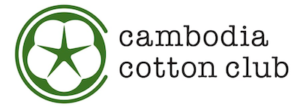In my last post, I told you that in a country like Cambodia, where environmental protection laws are not in place, it is one of the main sources of environmental pollution.
I tried to find where in Cambodia the bamboo rayon factory is located, but could not find it at all. I was told that it was made in Cambodia, but it appears to be from a different region.
A quick Internet search turns up the U.S. Federal Trade Commission as the official agency. In a January 2013 release, the Commission stated, "The Federal Trade Commission has issued a $16.000 sanctions against seven or eight retailers (including Amazon, Barneys New York, Wal-Mart, and others) for misrepresenting or mislabeling their products. 8 retailers (including Amazon, Barneys New York, Wal-Mart, etc.) will be fined $16.000 for each instance of incorrect advertising or labeling. The Federal Trade Commission and the retailers are currently working to resolve the issue. The case is currently in litigation between the Federal Trade Commission and the retail companies." Using the term "Bamboozling" (deceiving, mocking), this is a very strong warning to the selling company from a consumer protection standpoint.
The reason for this strong warning is that bamboo-derived rayon does not have a "low environmental impact. The rationale is that "bamboo grows without pesticides, but the benefits are more than offset by the use of toxic chemicals in the manufacturing process.
Even more problematic, products made from bamboo rayon cite the numerous benefits of bamboo as a plant, such as its "antibacterial" and "deodorizing" properties. Those that conjure up images such as "good for infants" or "effective against atopic diseases" are also the subject of Federal Trade Commission warnings.
Those of you who read my last post informed me that bamboo rayon is "rayon made from viscose. That is correct, and bamboo rayon is simply rayon. Bamboo rayon is made of exactly the same composition as conventional rayon.
I did quite a bit of research and it seems that most of these bamboo rayons are manufactured by Chinese companies. I see, no wonder there are no factories in Cambodia. I also checked Chinese websites and was confused because they all state that "our factory is the biggest in China," "we were the first to start operations," and "we can produce the best bamboo rayon," but it seems that the company that started manufacturing bamboo rayon based in Shanghai was the first to operate and the biggest bamboo rayon company.
Many bamboo rayon products are sold in Japan and Europe, as having a low environmental impact and incorporating the benefits of bamboo directly into the product. The U.S. Federal Trade Commission responded to this by saying, "Japanese and European consumers are buying something that does not exist. I will ask the person in charge directly what the problem is.
An environmentally conscious outdoor equipment manufacturer on the West Coast of the United States, which has taken an interest in Cambodian cotton, also has some harsh criticisms of bamboo rayon. Since I have visited the company once, I will try to find out what kind of discussions took place among scientists in the company's materials development team.
( to be continued )
